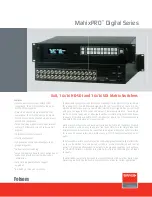
130
Software upgrade commands
boot-loader
Use
boot-loader
to specify a startup system software image for a member device or all member devices.
Syntax
boot-loader file
file
-
url
slot
{
all
|
slot-number
}
{
main
|
backup
}
Views
User view
Default command level
3: Manage level
Parameters
file
file
-
url
: Specifies a file path, a string of 1 to 63 characters. If you enter a relative path, the system
automatically converts it to an absolute path. The absolute path can contain up to 63 characters. The file
name uses the
drive
:/
file-name
format or the
file-name
format, where:
•
The
drive
argument specifies the storage medium where the file is saved. If only one storage
medium is available, you can omit the storage medium name. The storage medium of the master
device is identified by the storage name,
flash
, for example. The storage medium of a subordinate
device is identified in the
slot
slot-number#StorageMediumName
format (for example,
slot2#flash
),
where
slot-number
represents the IRF member ID of the device. If the
all
keyword is specified, the
drive
argument must not include an IRF member ID.
•
The file-name
argument specifies the file name, which typically uses the
.bin
extension.
slot
slot-number
: Specifies IRF members.
•
all
: Specifies all member devices in the IRF fabric.
•
slot-number
: Specifies an IRF member device by its member ID.
main
: Specifies the file as the main system software image. The main system software image has higher
priority than the backup system software image at startup.
backup
: Specifies the file as the backup system software image. The backup system software image is
used at startup only if the main system software image is unavailable.
Usage guidelines
To execute the
boot-loader
command successfully, make sure you have saved the image file in the root
directory of the specified storage medium.
If the
all
keyword is specified, make sure you have saved the specified system software image file in the
root directory of the storage medium on each member device.
Names of the startup system software image files on each member device can be different, but their
versions must be the same for a correct startup.
In FIPS mode, the system checks the signature of the startup software image for invalidity. If the startup
software image does not pass the check, specifying the startup software image fails.
















































